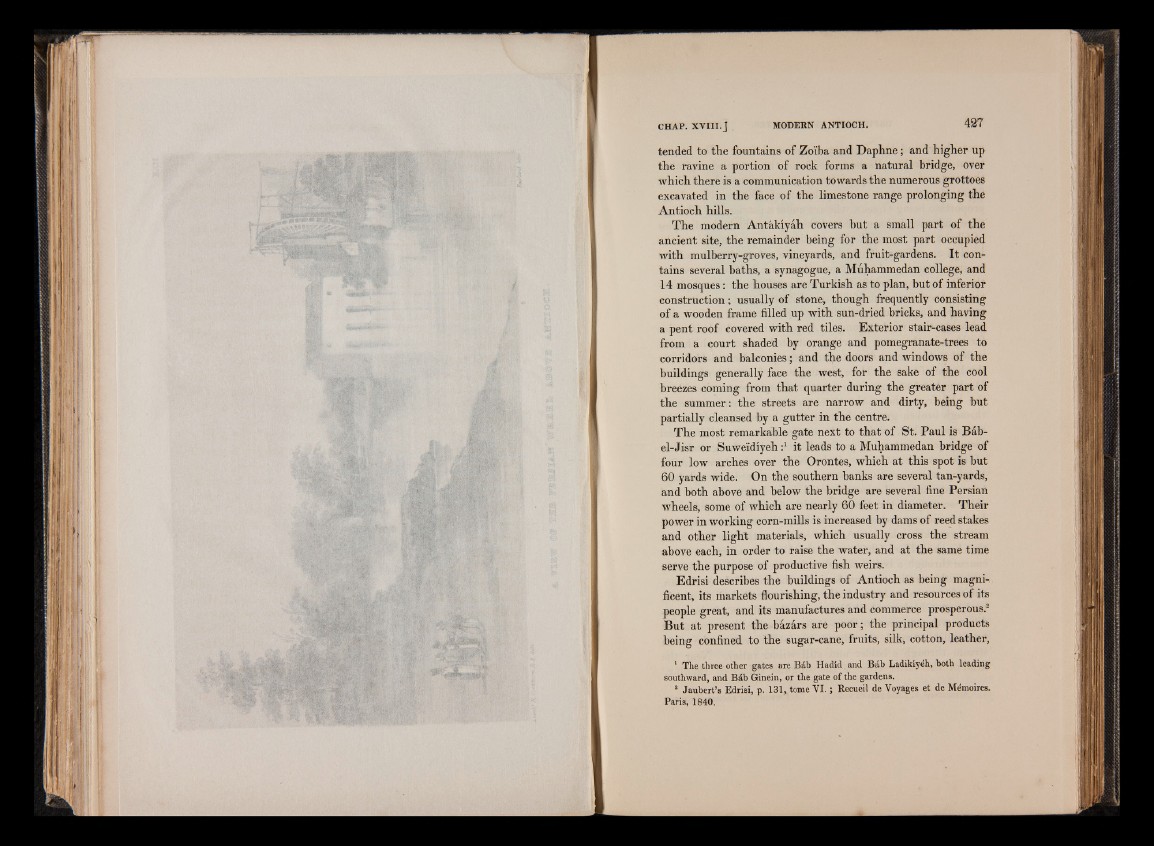
tended to the fountains of Zo'iba and Daphne ; and higher up
the ravine a portion of rock forms a natural bridge, over
which there is a communication towards the numerous grottoes
excavated in the face of the limestone range prolonging the
Antioch hills.
The modern Antàkiyâh covers but a small part of the
ancient site, the remainder being for the most part occupied
with mulberry-groves, vineyards, and fruit-gardens. It contains
several baths, a synagogue, a Muhammedan college, and
14 mosques : the houses are Turkish as to plan, but of inferior
construction ; usually of stone, though frequently consisting
of a wooden frame filled up with sun-dried bricks, and having
a pent roof covered with red tiles. Exterior stair-cases lead
from a court shaded by orange and pomegranate-trees to
corridors and balconies ; and the doors and windows of the
buildings generally face the west, for the sake of the cool
breezes coming from that quarter during the greater part of
the summer: the streets are narrow and dirty, being but
partially cleansed by a gutter in the centre.
The most remarkable gate next to that of St. Paul is Bâb-
el-Jisr or Suweïdiyeh i it leads to a Muhammedan bridge of
four low arches over the Orontes, which at this spot is but
60 yards wide. On the southern banks are several tan-yards,
and both above and below the bridge are several fine Persian
wheels, some of which are nearly 60 feet in diameter. Their
power in working corn-mills is increased by dams of reed stakes
and other light materials, which usually cross the stream
above each, in order to raise the water, and at the same time
serve the purpose of productive fish weirs.
Edrisi describes the buildings of Antioch as being magnificent,
its markets flourishing, the industry and resources of its
people great, and its manufactures and commerce prosperous.2
But at present the bazars are poor; the principal products
being confined to the sugar-cane, fruits, silk, cotton, leather,
1 The three other gates are Bdb Hadid and Bdb Ladikiyéh, both leading
southward, and Bdb Ginein, or the gate of the gardens.
2 Jaubert’s Edrisi, p. 131, tome VI. ; Recueil de Voyages et de Mémoires.
Paris, 1840.